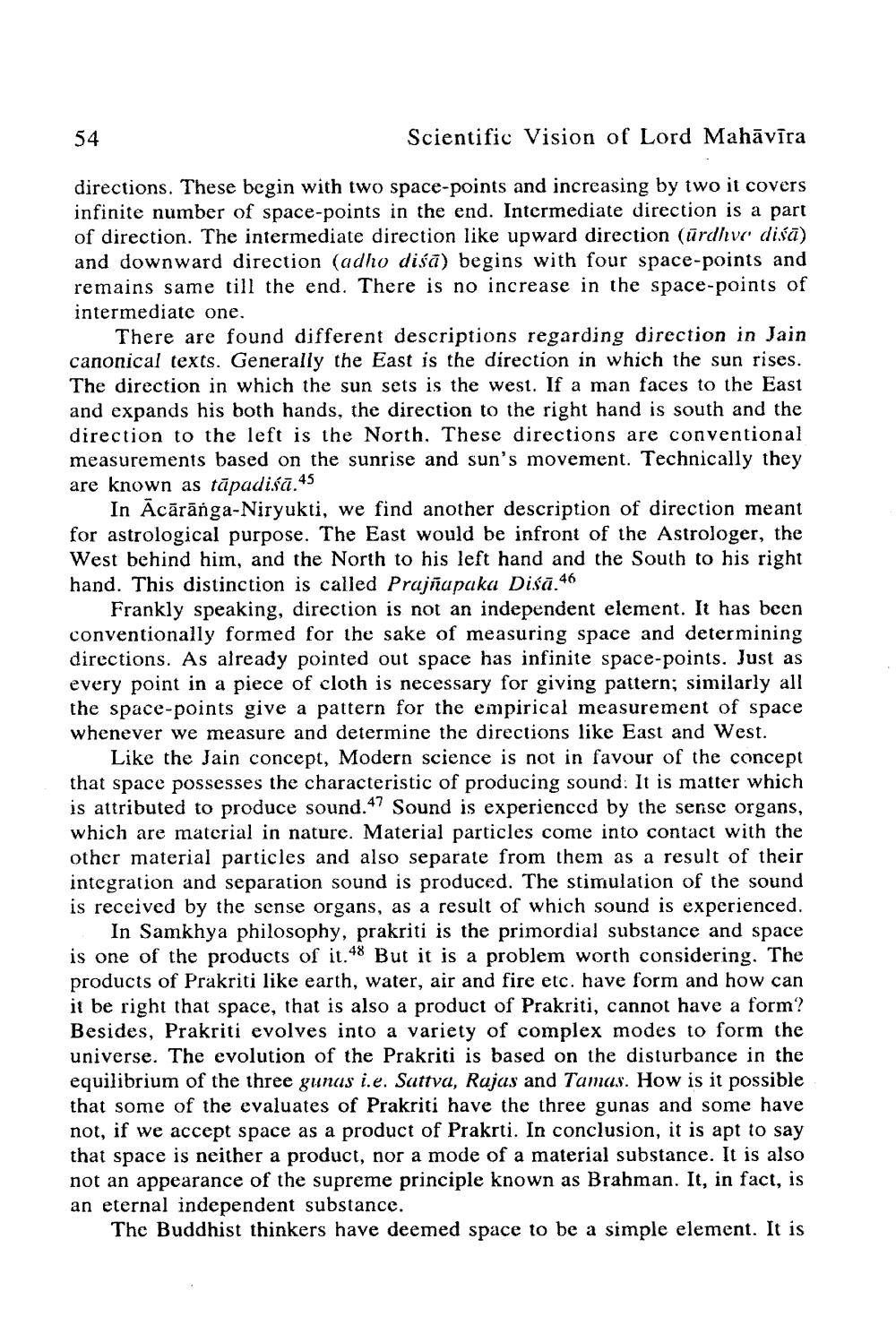________________
54
Scientific Vision of Lord Mahāvīra
directions. These begin with two space-points and increasing by two it covers infinite number of space-points in the end. Intermediate direction is a part of direction. The intermediate direction like upward direction (ürdhve diśā) and downward direction (adho diśā) begins with four space-points and remains same till the end. There is no increase in the space-points of intermediate one.
There are found different descriptions regarding direction in Jain canonical texts. Generally the East is the direction in which the sun rises. The direction in which the sun sets is the west. If a man faces to the East and expands his both hands, the direction to the right hand is south and the direction to the left is the North. These directions are conventional measurements based on the sunrise and sun's movement. Technically they are known as tāpadiśā.45
In Ācārānga-Niryukti, we find another description of direction meant for astrological purpose. The East would be infront of the Astrologer, the West behind him, and the North to his left hand and the South to his right hand. This distinction is called Prajñapaka Diśā.46
Frankly speaking, direction is not an independent element. It has been conventionally formed for the sake of measuring space and determining directions. As already pointed out space has infinite space-points. Just as every point in a piece of cloth is necessary for giving pattern; similarly all the space-points give a pattern for the empirical measurement of space whenever we measure and determine the directions like East and West.
Like the Jain concept, Modern science is not in favour of the concept that space possesses the characteristic of producing sound: It is matter which is attributed to produce sound.47 Sound is experienced by the sense organs, which are material in nature. Material particles come into contact with the other material particles and also separate from them as a result of their integration and separation sound is produced. The stimulation of the sound is received by the sense organs, as a result of which sound is experienced.
In Samkhya philosophy, prakriti is the primordial substance and space is one of the products of it.48 But it is a problem worth considering. The products of Prakriti like earth, water, air and fire etc. have form and how can it be right that space, that is also a product of Prakriti, cannot have a form? Besides, Prakriti evolves into a variety of complex modes to form the universe. The evolution of the Prakriti is based on the disturbance in the equilibrium of the three gunas i.e. Sattva, Rajas and Tamas. How is it possible that some of the evaluates of Prakriti have the three gunas and some have not, if we accept space as a product of Prakrti. In conclusion, it is apt to say that space is neither a product, nor a mode of a material substance. It is also not an appearance of the supreme principle known as Brahman. It, in fact, is an eternal independent substance.
The Buddhist thinkers have deemed space to be a simple element. It is




